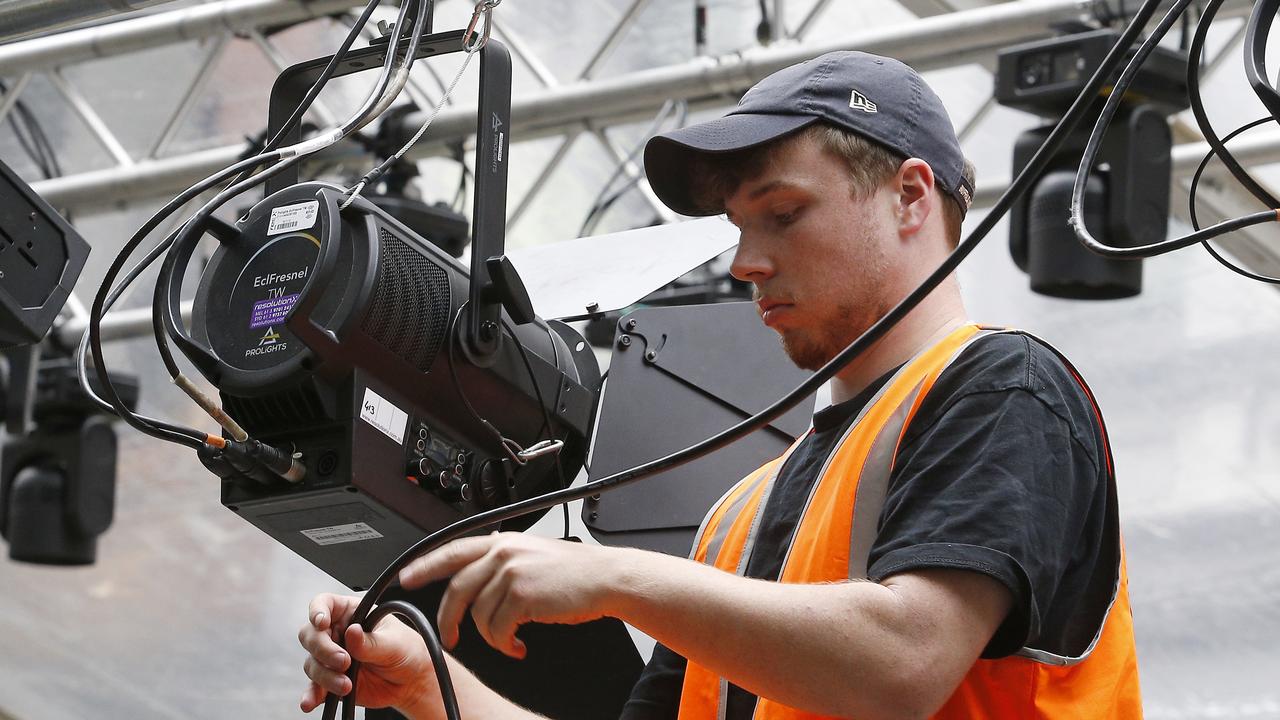Solar panel rebate: How does it work? How do I get it?
Solar panels on Aussie rooftops are going “gangbusters” with up to three million homes already covered with the energy generating devices.

Business
Don't miss out on the headlines from Business. Followed categories will be added to My News.
If you’ve ever found yourself complaining about exorbitant electricity bills, you may have considered the installation of solar panels in your home.
If so, you wouldn’t be alone.
Speaking to news.com.au, the Policy and Research Manager at sustainability advocacy group Renew, Damien Moyse says Australia is the world leader in the uptake of rooftop solar systems “by a long shot”.
“We’re are heading up to three million homes with solar out of the rough 10 million homes in Australia,” he says.
“The last five years has seen solar on rooftop go gangbusters.”
And while upfront cost is a key reason for households not installing solar panels, there are a number of federal, state and retailer incentives available to eligible customers.
WHAT SOLAR REBATES ARE ON OFFER?
Federal government solar rebate:
Under the federal government’s Renewable Energy Target, the Small-Scale Renewable Energy Scheme (SRES) offers households a financial incentive to install renewable energy systems such as rooftop solar, solar water heaters and heat pumps.
“This means if you buy a solar photovoltaic (PV) system (a rooftop solar panel system) for your home it automatically discounts the system by about 20 per cent,” says Mr Moyse.
“When you get the quote from the solar installer you’ll see this acronym called STCs which stands for ‘small technology certificates’. That’s the instrument that’s traded in the renewable energy market and that’s how you get your discount.”
Just keep in mind the exact amount of the incentive changes depending on factors like the size of your system, your location and market conditions.
Depending on your state you may also be eligible for rebates related to the installation of your solar PV panels, solar batteries or a solar hot water system.
Solar rebate ACT
ACT households can access discounts to install a battery storage unit connected to a new or existing rooftop solar PV system. These systems mean solar energy can be stored during peak times and used later on, for example during a grid outage.
The ACT Next Generation Energy Storage Grants Scheme offers a rebate of $825 per kilowatt (kW) on new solar battery storage devices, up to a maximum of 30kW. This means that if you bought a battery with a storage of 5kW than you could access a $4125 rebate.
Solar rebate Victoria
Solar rebates for Victoria include discounts for panels, batteries, energy efficient heating and cooling and solar hot water systems.
Until June 30, 2021, households installing a solar panel system can get a maximum rebate of up to $1850, with the option of an interest-free loan.
The state’s solar battery rebate also means eligible Victorians can save a maximum of $4174 on the upfront costs of their system, which is roughly 50 per cent of the costs.
There are however a set amount of rebates available and you can see exactly how many rebates are remaining for each category on the Solar Victoria website.
Solar rebate South Australia
Due to an overwhelmingly positive response, since September 10, 2020, SA’s Home Battery Scheme subsidy has been cut from a maximum of $4,000 to $3,000 per battery installed. However, low-interest financing is available if necessary.
Solar rebate Queensland
While no specific grants or subsidies are available for Queensland residents looking to install solar panels, can sing up to a solar power purchase agreement that allows homeowners to have a solar power system installed without having to pay upfront.
Instead, a power provider or network installs and maintains the system and the purchaser (homeowner) pays for the cheaper solar power that’s been generated from the panels. The homeowner will also continue to pay for any electricity they use from the grid. The agreements last for a predetermined contract length of seven to 15 years and after this the ownership may be transferred to the resident.
Solar rebate New South Wales
New South Wales residents in eligible postcodes can access interest-free loans under the Empowering Homes solar battery loan offer. This includes interest-free loans of up to $14,000 to purchase a solar PV and battery system (repayable up to a term of eight years) or a maximum loan of up to $9000 to retrofit a battery system to an existing solar PV system (repayable up to a term of 10 years). To find out if you live in an eligible postcode check out this list.
Virtual power plant programs from retailers and network businesses
Some retailers and network businesses that manage your area’s poles and the wires may also offer select homes located in a specific area of a network a discount if they choose to install a battery. This creates a virtual power plant that connects a large number of solar battery storage systems and can help the network business, or retailer manage peak demand or lower the cost or exposure in the wholesale market.
“It’s more of a contractual agreement but it may work out to be a 30 per cent discount on a battery for the customer,” adds Mr Moyse.

HOW MUCH CAN YOU SAVE WITH SOLAR PANELS?
Mr Moyse estimates that the average household with a $7500 (without any rebates) medium, “commonly-sized solar PV system” could save around $1000 to $15000 a year on their electricity bills.
“That would save for itself in roughly seven years,” he says, adding that this figure would be even greater if combined with federal and state rebates.
“Someone basically spending $7500 to get back $1500 annually is a great deal. That’s better than you paying off your mortgage, or any share market, super fund or term deposit investment.
“The worst case scenario is a 20 per cent return on your money.”
Although energy prices are predicted to go down in the next 10 years due to increased renewable sources and technological advances in the energy sector, Mr Moyse is certain investing in solar panels will still save households in the long run.
“In 10 years time will wind and solar still be economically attractive? Yes is will, there’s no doubt about it,” he says.
“Even if there were no rebates available you would still save a bucket load from solar panels. It reduces your bills by a lot.”
This article is created in sponsorship with iSelect.
Originally published as Solar panel rebate: How does it work? How do I get it?



